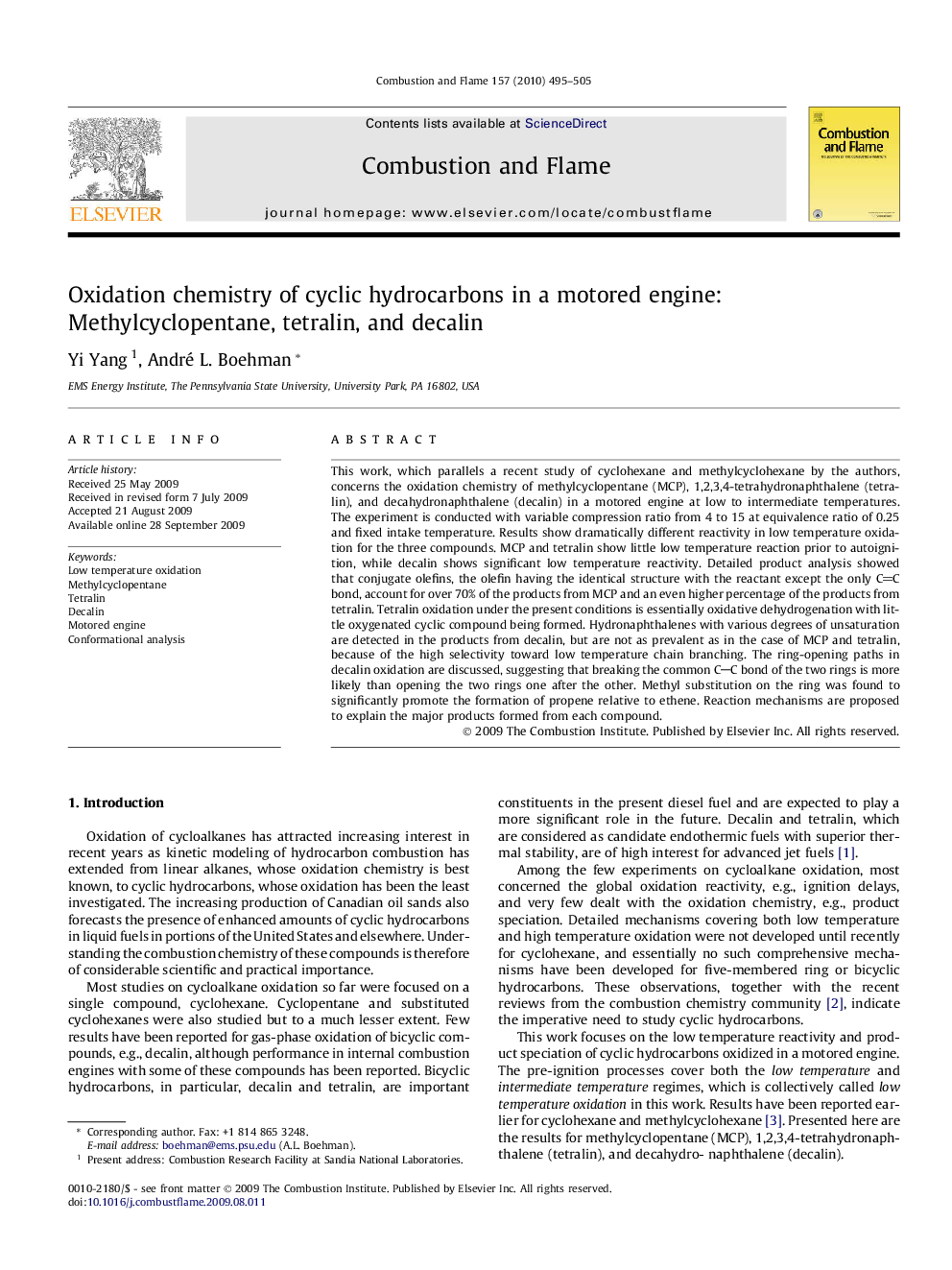| کد مقاله | کد نشریه | سال انتشار | مقاله انگلیسی | نسخه تمام متن |
|---|---|---|---|---|
| 169680 | 458032 | 2010 | 11 صفحه PDF | دانلود رایگان |

This work, which parallels a recent study of cyclohexane and methylcyclohexane by the authors, concerns the oxidation chemistry of methylcyclopentane (MCP), 1,2,3,4-tetrahydronaphthalene (tetralin), and decahydronaphthalene (decalin) in a motored engine at low to intermediate temperatures. The experiment is conducted with variable compression ratio from 4 to 15 at equivalence ratio of 0.25 and fixed intake temperature. Results show dramatically different reactivity in low temperature oxidation for the three compounds. MCP and tetralin show little low temperature reaction prior to autoignition, while decalin shows significant low temperature reactivity. Detailed product analysis showed that conjugate olefins, the olefin having the identical structure with the reactant except the only CC bond, account for over 70% of the products from MCP and an even higher percentage of the products from tetralin. Tetralin oxidation under the present conditions is essentially oxidative dehydrogenation with little oxygenated cyclic compound being formed. Hydronaphthalenes with various degrees of unsaturation are detected in the products from decalin, but are not as prevalent as in the case of MCP and tetralin, because of the high selectivity toward low temperature chain branching. The ring-opening paths in decalin oxidation are discussed, suggesting that breaking the common CC bond of the two rings is more likely than opening the two rings one after the other. Methyl substitution on the ring was found to significantly promote the formation of propene relative to ethene. Reaction mechanisms are proposed to explain the major products formed from each compound.
Journal: Combustion and Flame - Volume 157, Issue 3, March 2010, Pages 495–505